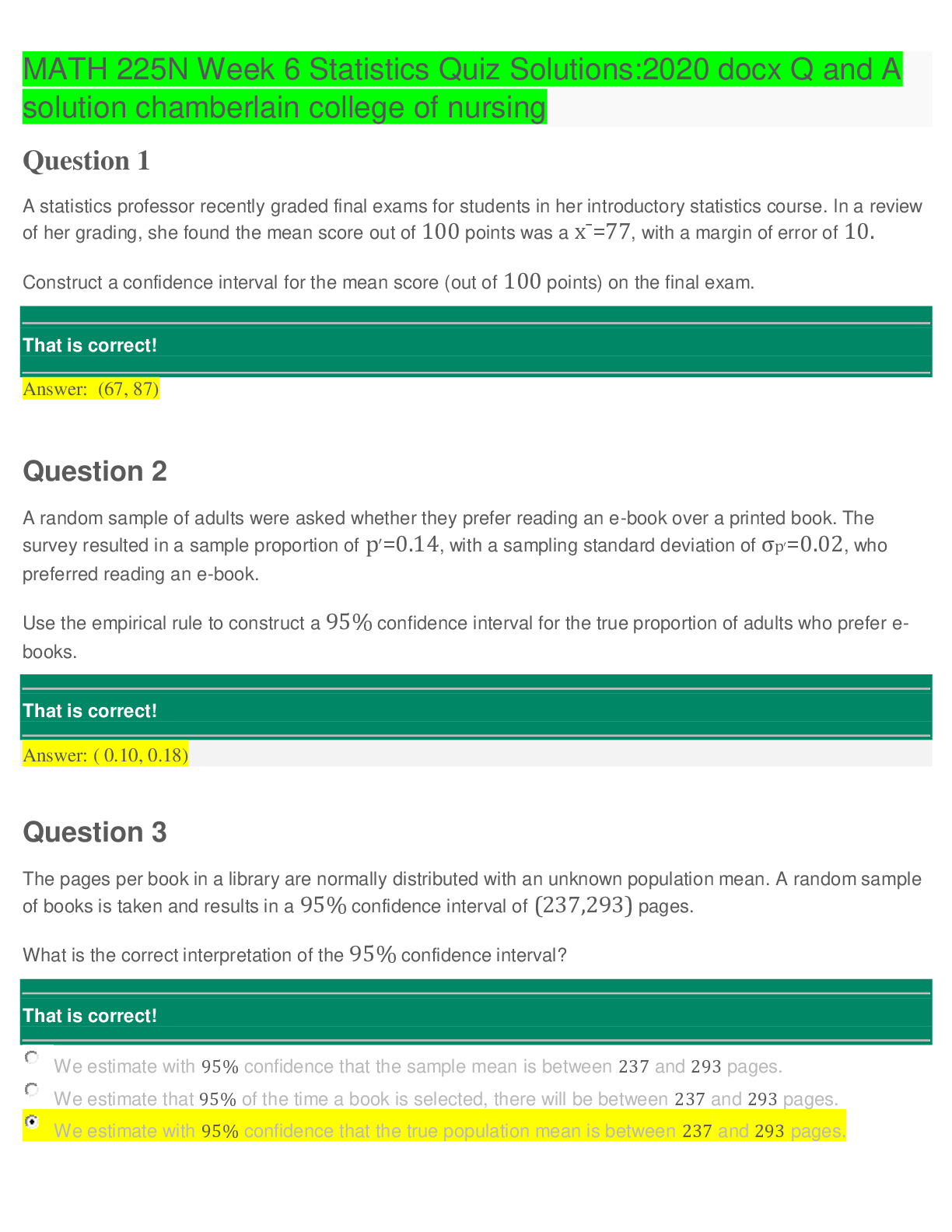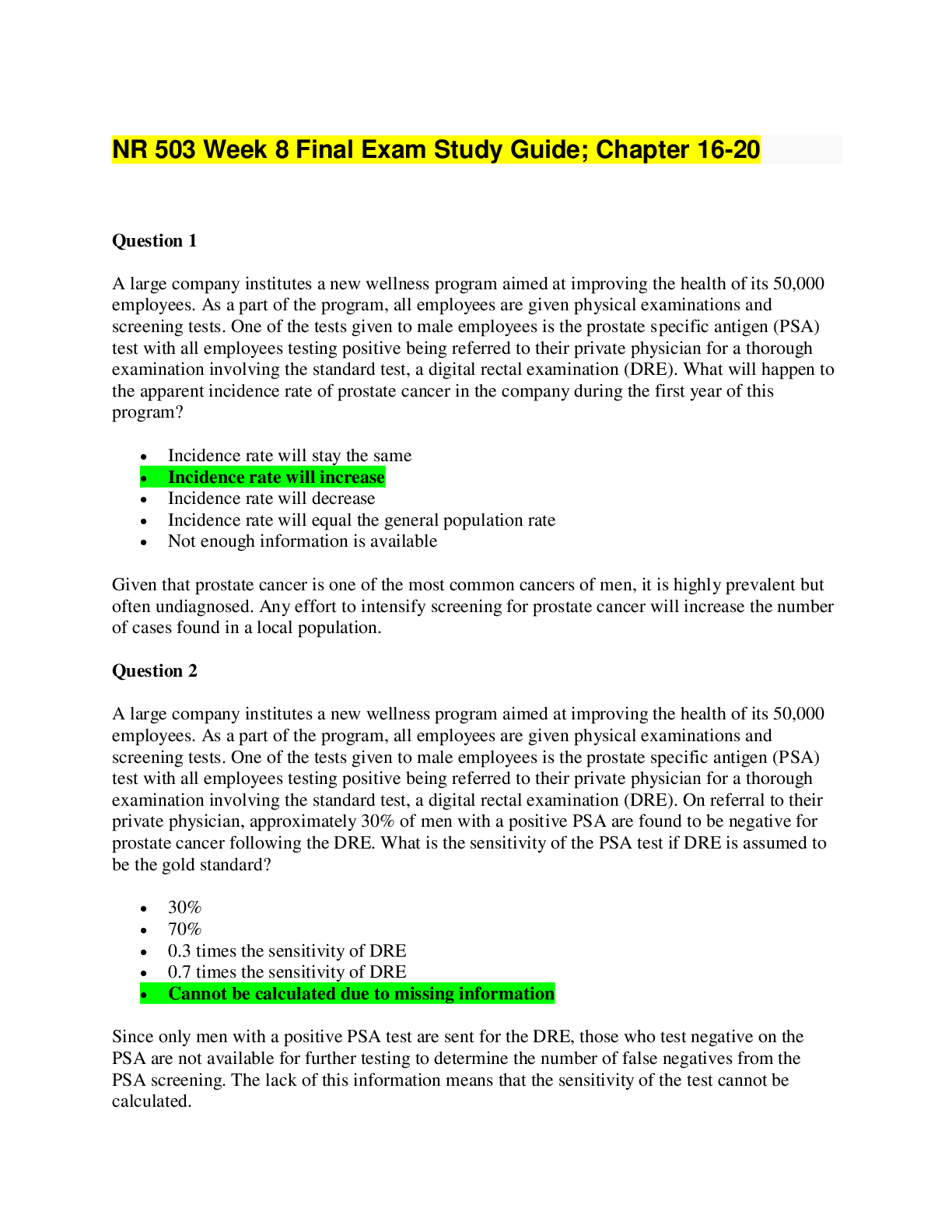*NURSING > QUESTIONS & ANSWERS > ATI Pharmacology Midterm Questions and Answers|Rationale | NR293, Chamberlain College Of Nursing. (All)
ATI Pharmacology Midterm Questions and Answers|Rationale | NR293, Chamberlain College Of Nursing.
Document Content and Description Below
ATI Pharmacology Midterm NR293 A nurse is caring for a 4-year-old child who is resistant to taking medication. Which of the following strategies should the nurse use to elicit the child’s cooperat... ion? a. Offer the child a choice of taking the medication with juice or water b. Tell the child it is candy c. Hide the medications in a large dish of ice cream d. Tell the child he will have a shot instead A nurse is caring for a client who has difficulty swallowing medications and is prescribed enteric-coated aspirin PO once daily. The client asks if the medication can be crushed to make it easier to swallow. Which of the following responses should the nurse provide? e. "Crushing the medication might cause you to have a stomachache or indigestion.. f. "Crushing the medication is a good idea, and I can mix it in some ice cream for you.” g. "Crushing the medication would release all the medication at once, rather than over time." h. "Crushing is unsafe, as it destroys the ingredients in the medication." A nurse is caring for a client who has congestive heart failure and is taking digoxin daily. The client refused breakfast and is complaining of nausea and weakness. Which of the following actions should the nurse take first? i. A. Check the client's vital signs. j. Request a dietitian consult. k. Suggest that the client rests before eating the meal. l. Request an order for an antiemetic. A nurse is caring for a client who has thrombophlebitis and is receiving heparin by continuous IV infusion. The client asks the nurse how long it will take for the heparin to dissolve the clot. Which of the following responses should the nurse give? m. "It usually takes heparin at least 2 to 3 days to reach a therapeutic blood level." n. "A pharmacist is the person to answer that question." o. "Heparin does not dissolve clots. It stops new clots from forming.". p. "The oral medication you will take after this IV will dissolve the clot. A nurse is caring for a client who has bipolar disorder and has been taking lithium for 1 year. Before administering the medication, the nurse should check to see that which of the following tests have been completed? q. Thyroid hormone assay r. Liver function tests: s. Erythrocyte sedimentation rate. t. Brain natriuretic peptide 2. A nurse is providing discharge teaching to a client who has asthma and new prescriptions for cromolyn and albuterol, both by nebulizer. Which of the following statements by the client indicates an understanding of the teaching? a. “If my breathing begins to feel tight, I will use the cromolyn immediately.” b. “I will be sure to take the albuterol before taking the cromolyn.” c. “I will use both medications immediately after exercising.” d. “I will administer the medications 10 minutes apart.” 3. A nurse is completing a medication history for a client who reports using over-the-counter calcium carbonate antacid. Which of the following recommendations should the nurse make about taking this medication? a. Decrease bulk in the diet to counteract the adverse effect of diarrhea. b. Take the medication with dairy products to increase absorption. c. Reduce sodium intake. d. Drink a glass of water after taking the medication. 4. A nurse is caring for a client who has deep vein thrombosis and has been on heparin continuous infusion for 5 days. The provider prescribes warfarin PO without discontinuing the heparin. The client asks the nurse why both anticoagulants are necessary. Which of the following statements should the nurse make? a. "Warfarin takes several days to work, so the IV heparin will be used until the warfarin reaches a therapeutic level." b. "I will call the provider to get a prescription for discontinuing the IV heparin today.” c. "Both heparin and warfarin work together to dissolve the clots." d. "The IV heparin increases the effects of the warfarin and decreases the length of your hospital stay." 5. A nurse is providing teaching to a client who has asthma and a new prescription for inhaled beclomethasone. Which of the following instructions should the nurse provide? a. Check the pulse after medication administration. b. Take the medication with meals. c. C. Rinse the mouth after administration. d. Limit caffeine intake. 6. A nurse is teaching a client who has a new prescription for colchicine to treat gout. Which of the following instructions should the nurse include? a. "Take this medication with food if nausea develops." b. B. "Monitor for muscle pain." c. "Expect to have increased bruising." d. "Increase your intake of grapefruit juice” 7. A nurse is caring for a client who has active pulmonary tuberculosis (TB) and is to be started on intravenous rifampin therapy. The nurse should instruct the client that this medication can cause which of the following adverse effects? a. Constipation b. Black colored stools c. Staining of teeth d. Body secretions turning a red-orange color 8. A nurse caring for a client who has hypertension and asks the nurse about a prescription for propranolol. The nurse should inform the client that this medication is contraindicated in clients who have a history of which of the following conditions? a) Asthma . b) Glaucoma c) Depression d) Migraines 9. A nurse is teaching a client who has chronic kidney disease and a new prescription for epoetin alfa. The nurse should instruct the client to increase dietary intake of which of the following substances? a. Iron b. Protein c. Potassium d. Sodium 10. A nurse is assessing a client who is receiving IV vancomycin. The nurse notes a flushing of the neck and tachycardia. Which of the following actions should the nurse take? a. A. Document that the client experienced an anaphylactic reaction to the medication. b. Change the IV infusion site. c. Decrease the infusion rate on the IV. d. Apply cold compresses to the neck area. 11. A nurse is teaching a client who has a urinary tract infection (UTI) and is taking ciprofloxacin. Which of the following instructions should the nurse give to the client? a. "If the medicine causes an upset stomach, take an antacid at the same time." b. "Limit your daily fluid intake while taking this medication." c. "This medication can cause photophobia, so be sure to wear sunglasses outdoors." d. "You should report any tendon discomfort you experience while taking this medication." 12. A nurse is preparing to administer verapamil by IV bolus to a client who is having cardiac dysrhythmias. For which of the following adverse effects should the nurse monitor when giving this medication? a. Hyperthermia b. Hypotension . c. Ototoxicity d. Muscle pain 13. A nurse is caring for a client who has a fungal infection and has a new prescription for amphotericin B. Which of the following laboratory values should the nurse report to the provider before initiating the medication? a. Sodium 140 mEq/L b. Potassium 4.5 mEq/L c. BUN 55 mg/dL d. D. Glucose 120 mg/dL 14. A nurse is providing teaching to a client who has renal failure and an elevated phosphorous level. The provider instructed the client to take aluminum hydroxide 300 mg PO three times daily. For which of the following adverse effects should the nurse inform the client? a. Constipation b. B. Metallic taste c. Headache d. Muscle spasms 15. A nurse is teaching a client who has been taking prednisone to treat asthma and has a new prescription to discontinue the medication. The nurse should explain to the client to reduce the dose gradually to prevent which of the following adverse effects? a. Hyperglycemia b. Adrenocortical insufficiency c. Severe dehydration d. Rebound pulmonary congestion 16. A nurse is preparing a client for surgery. Prior to administering the prescribed hydroxyzine, the nurse should explain to the client that the medication is for which of the following indications? (Select all that apply.) a. Controlling emesis b. Diminishing anxiety c. Reducing the amount of narcotics needed for pain relief d. Preventing thrombus formation 17. A nurse is caring for a client who has streptococcal pneumonia and a prescription for penicillin G by intermittent IV bolus. 10 minutes into the infusion of the third dose, the client reports that the IV site itches and that he feels dizzy and short of breath. Which of the following actions should the nurse take first? a. Stop the infusion. b. Call the client's provider. c. Elevate the head of the bed. d. Auscultate the client's breath sounds. 18. A nurse is caring for a client who is taking lisinopril. Which of the following outcomes indicates a therapeutic effect of the medication? a. Decreased blood pressure b. Increase of HDL cholesterol c. Prevention of bipolar manic episodes d. Improved sexual function 19. A nurse is caring for a client who has poison ivy and is prescribed diphenhydramine. Which of the following instructions should the nurse give regarding the adverse effect of dry mouth associated with diphenhydramine? a. "Administer the medication with food." b. "Chew on sugarless gum or suck on hard, sour candies." c. "Place a humidifier at your bedside every evening." d. “discontinue the medication and notify your provider” 20. A nurse is caring for a client who has an infection and a prescription for gentamicin intermittent IV bolus every 8 hr. A peak and trough is required with the next dose. Which of the following actions should the nurse take to obtain an accurate gentamicin serum level? a. Draw a trough level at 0900 and a peak level at 2100. b. Draw a peak level 90 min prior to administering the medication and a trough level 90 min after the dose. c. Draw a trough level immediately prior to administering the medication and a peak level 30 min after the dose. d. Draw a peak level at 0900 and a trough level at 2100. 21. A nurse in a substance abuse clinic is assessing a client who recently started taking disulfiram. The client reports having discontinued the medication after experiencing severe nausea and vomiting. Which of the following reasons should the nurse suspect to be a likely cause of the client's distress? a. The client demonstrated an allergic response to the medication. b. The client experienced a common side effect to the medication. c. The client consumed alcohol while taking the medication. . d. The client took an overdose of the medication. 22. A nurse is reviewing the medical record of a client who has been on levothyroxine for several months. Which of the following findings indicates a therapeutic response to the medication? a. Decrease in level of thyroxine (T4) b. Increase in weight c. Increase in hour of sleep per night d. Decrease in level of thyroid stimulating hormone (TSH). 23. A nurse on an oncology unit is preparing to administer doxorubicin to a client who has breast cancer. Prior to beginning the infusion, the nurse verifies the client's current cumulative lifetime dose of the medication. For which of the following reasons is this verification necessary? a. An excess amount of doxorubicin can lead to myelosuppression. b. Exceeding the lifetime cumulative dose limit of doxorubicin might cause extravasation. c. An excess amount of doxorubicin can lead to cardiomyopathy. d. Exceeding the lifetime cumulative dose limit of doxorubicin might produce red tinged urine and sweat. 24. A nurse is caring for a client who is taking naproxen following an exacerbation of rheumatoid arthritis. Which of the following statements by the client requires further discussion by the nurse? a. "I signed up for a swimming class." b. "I've been taking an antacid to help with indigestion." c. "I've lost 2 pounds since my appointment 2 weeks ago." d. "The naproxen is easier to take when I crush it and put it in applesauce." 25. A nurse is caring for a client who has heart failure and a prescription for digoxin. Which of the following statements by the client indicates an adverse effect of the medication? a. "I can walk a mile a day." b. "I've had a backache for several days." c. "I am urinating more frequently." d. "I feel nauseated and have no appetite." 26. A nurse is providing teaching for a client who has anemia and a new prescription for ferrous sulfate liquid. Which of the following instructions should the nurse provide? a. Take the medication on an empty stomach to decrease gastrointestinal irritation. b. Take the medication with orange juice to enhance absorption. c. Take the medication with milk. d. Rinse the mouth before taking the iron. 27. A nurse is preparing to administer a dose of lactulose to a client who has cirrhosis. The client states, "I don't need this medication. I am not constipated." The nurse should explain that in clients who have cirrhosis, lactulose is used to decrease levels of which of the following components in the bloodstream? a. Glucose b. Ammonia c. Potassium d. Bicarbonate 28. A nurse is caring for a client who has HIV-1 infection and is prescribed zidovudine as part of antiretroviral therapy. The nurse should monitor the client for which of the following adverse effects of this medication? a. Cardiac dysrhythmia b. Metabolic alkalosis c. Renal failure d. Aplastic anemia 29. A nurse is caring for a client who has chronic renal disease and is receiving therapy with epoetin alfa. Which of the following laboratory results should the nurse review for an indication of a therapeutic effect of the medication? a. The leukocyte count b. The platelet count c. The hematocrit (Hct) d. The erythrocyte sedimentation rate (ESR) 30. A nurse is caring for a client who is prescribed warfarin therapy for an artificial heart valve. Which of the following laboratory values should the nurse monitor for a therapeutic effect of warfarin? a. Hemoglobin b. Prothrombin time (PT) c. Bleeding time d. Activated partial thromboplastin time (aPTT) 31. A nurse in a critical care unit is caring for a client who is postoperative following a right pneumonectomy. After extubation from the ventilator, in which of the following positions should the client be placed? a. Prone b. On the nonoperative side c. Sims' d. Semi-Fowler's 32. A nurse in a coronary care unit is admitting a client who has had CPR following a cardiac arrest. The client is receiving lidocaine IV at 2 mg/min. When the client asks the nurse why he is receiving that medication, the nurse should explain that it has which of the following actions? a. Prevents dysrhythmias b. Slows intestinal motility c. Dissolves blood clots d. Relieves pain 33. A nurse in a provider's clinic is assessing a client who has cancer and a prescription for methotrexate PO. Which of the following actions should the nurse take when the client reports bleeding gums? a. Explain to the client that this is an expected adverse effect. b. Check the value of the client's current platelet count. c. Instruct the client to use an electric toothbrush. d. Have the client make an appointment to see the dentist. 34. A nurse is caring for a client who has bipolar disorder and has been taking lithium for 1 year. Before administering the medication, the nurse should check to see that which of the following tests have been completed? a. Thyroid hormone assay b. Liver function test c. Erythrocyte sedimentation rate d. Brain natriuretic peptide 35. A nurse in a mental health clinic is caring for a client who has bipolar disorder and a prescription for an antipsychotic medication. The provider and nursing staff suspect the client is not adhering to his medication therapy. Which of the following interventions should the staff use to encourage the client's adherence? (Select all that apply.) a. Perform mouth checks following the administration of the medication. b. Provide for once-daily dosing. c. Use sustained-release forms. d. Engage the client in conversation following medication administration. 36. A nurse in a provider's clinic is caring for a client who reports erectile dysfunction and requests a prescription for sildenafil. Which of the following medications currently prescribed for the client is a contraindication to taking sildenafil? a. Isosorbide b. Phenytoin c. Metronidazole d. Prednisone 37. A nurse is caring for a client who has developed gout. Which of the following medications should the nurse prepare to administer? a. Zolpidem b. Alprazolam c. Spironolactone d. Allopurinol 38. A nurse is caring for a client who has diabetes insipidus and is receiving vasopressin. The nurse should identify which of the following findings as an indication that the medication is effective? a. A decrease in blood sugar b. A decrease in blood pressure. c. A decrease in urine output d. A decrease in specific gravity 39. A nurse on a medical unit is planning care for an older adult client who takes several medications. Which of the following prescribed medications places the client at risk for orthostatic hypotension? (Select all that apply.) a. Furosemide b. Telmisartan c. Duloxetine d. Clopidogrel 40. A home health nurse is assessing an older adult client who reports falling a couple of times over the past week. Which of the following findings should the nurse suspect is contributing to the client's falls? a. The client takes alprazolam. b. The client has a nonslip bath mat in his shower. c. The client uses a raised toilet seat. d. The client wears fitted slippers. 41. A nurse is teaching a client who takes warfarin daily. Which of the following statements by the client indicates a need for further teaching? a. "I have started taking ginger root to treat my joint stiffness." b. "I take this medication at the same time each day.” c. "I eat a green salad every night with dinner." d. "I had my INR checked three weeks ago." 42. A nurse is teaching a client about the adverse effects of cisplatin. Which of the following adverse effects should the nurse include in the teaching? a. Tinnitus b. Constipation c. Hyperkalemia d. Weight gain 43. A nurse is completing a medical interview with a client who has elevated cholesterol levels and takes warfarin. The nurse should recognize that which of the following actions by the client can potentiate the effects of warfarin? a. The client follows a low-fat diet to reduce cholesterol b. The client drinks a glass of grapefruit juice every day. c. The client sprinkles flax seeds on food 1 hr before taking the anticoagulant. d. The client uses garlic to lower cholesterol levels. 44. A nurse is caring for a client who has a new prescription for ferrous sulfate tablets twice daily for iron-deficiency anemia. The client asks the nurse why the provider instructed that she take the ferrous sulfate between meals. Which of the following responses should the nurse make? a. "Taking the medication between meals will help you avoid becoming constipated." b. "Taking the medication with food increases the risk of esophagitis." c. "Taking the medication between meals will help you absorb the medication more efficiently." d. "The medication can cause nausea if taken with food." 45. A nurse is caring for a female client who has rheumatoid arthritis and asks the nurse if it is safe for her to take aspirin. The nurse should recognize which of the following findings in the client's history is a contraindication to this medication? a. Report of recent migraine headaches b. History of gastric ulcers c. Current diagnosis of glaucoma d. Prior reports of amenorrhea 46. A nurse is providing discharge teaching for a client who has a new prescription for warfarin. Which of the following instructions should the nurse include in the teaching? a. Mild nosebleeds are common during initial treatment. b. Use an electric razor while on this medication. . c. If a dose of the medication is missed, double the dose at the next scheduled time. d. Increase fiber intake to reduce the adverse effect of constipation. 47. A nurse is providing teaching to a client who has emphysema and a new prescription for theophylline. Which of the following instructions should the nurse provide? a. Consume a high-protein diet. b. Administer the medication with food. c. Avoid caffeine while taking this medication. d. Increase fluids to 1L/per day. 48. Nurse is teaching about furosemide, the nurse should recommend what foods about best source of potassium 49. Status asthmatics 50. Morphine or any kind of drug like this watch 51. Giving ophthalmic ointment for Conjunctivitis, what instructions do you have 52. Bacterial junctivitis 53. Jenomycin, what would we do to reduce adverse effects? 54. Methrotrodonizol (flagyl): which of the following sense is an adverse effect? 55. 4 clients and you gave all medications, but procardia/nitrate was given to wrong person what do you do first? 56. What should be consideration when determining schedule of giving scheduled medications 57. fiafilin --what instructions would nurse give 58. Public school: what foods to avoid when taking rx 59. What nursing considerations before giving Dilantin suspension [Show More]
Last updated: 1 year ago
Preview 1 out of 14 pages

Reviews( 1 )

by tia nelson · 2 years ago
Document information
Connected school, study & course
About the document
Uploaded On
May 23, 2020
Number of pages
14
Written in
Additional information
This document has been written for:
Uploaded
May 23, 2020
Downloads
1
Views
133

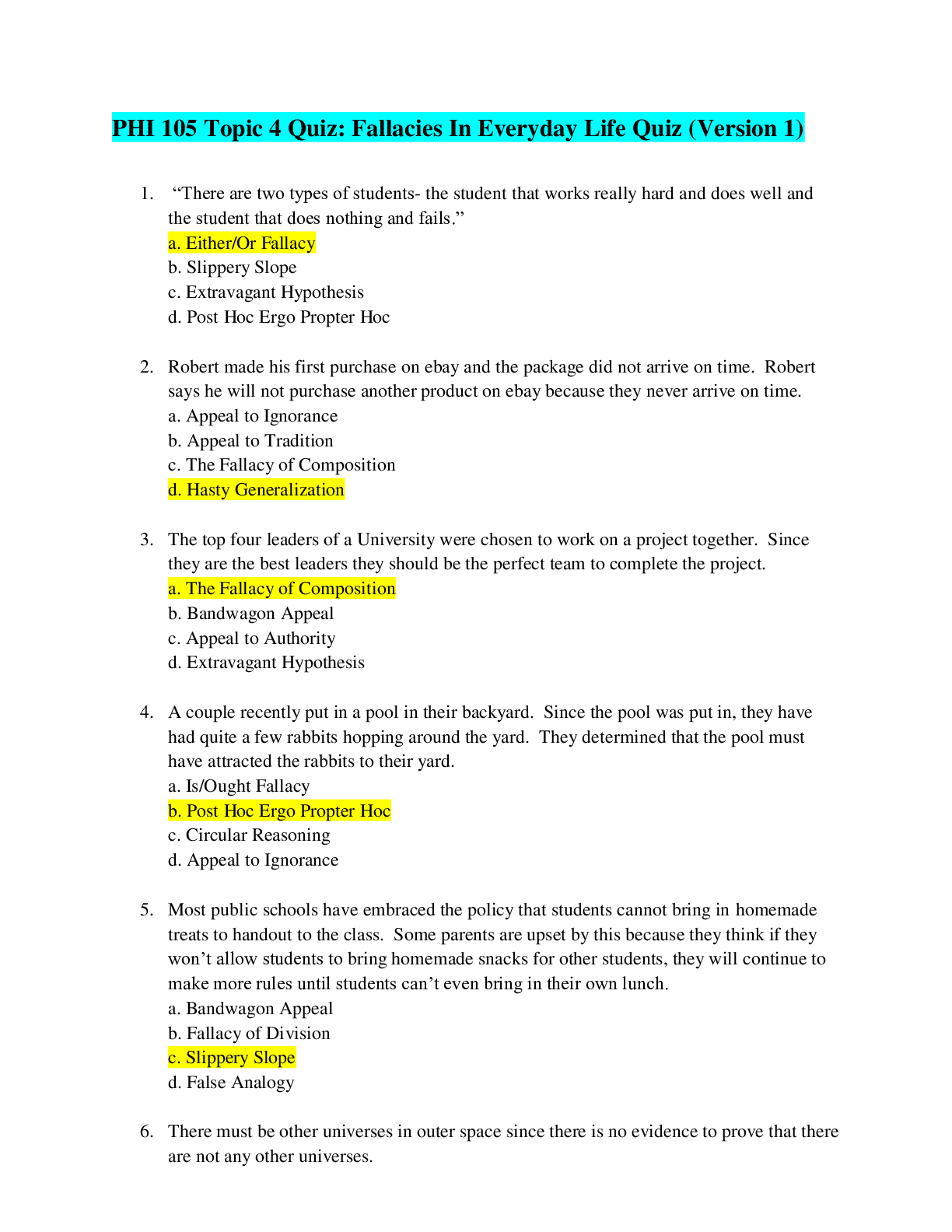


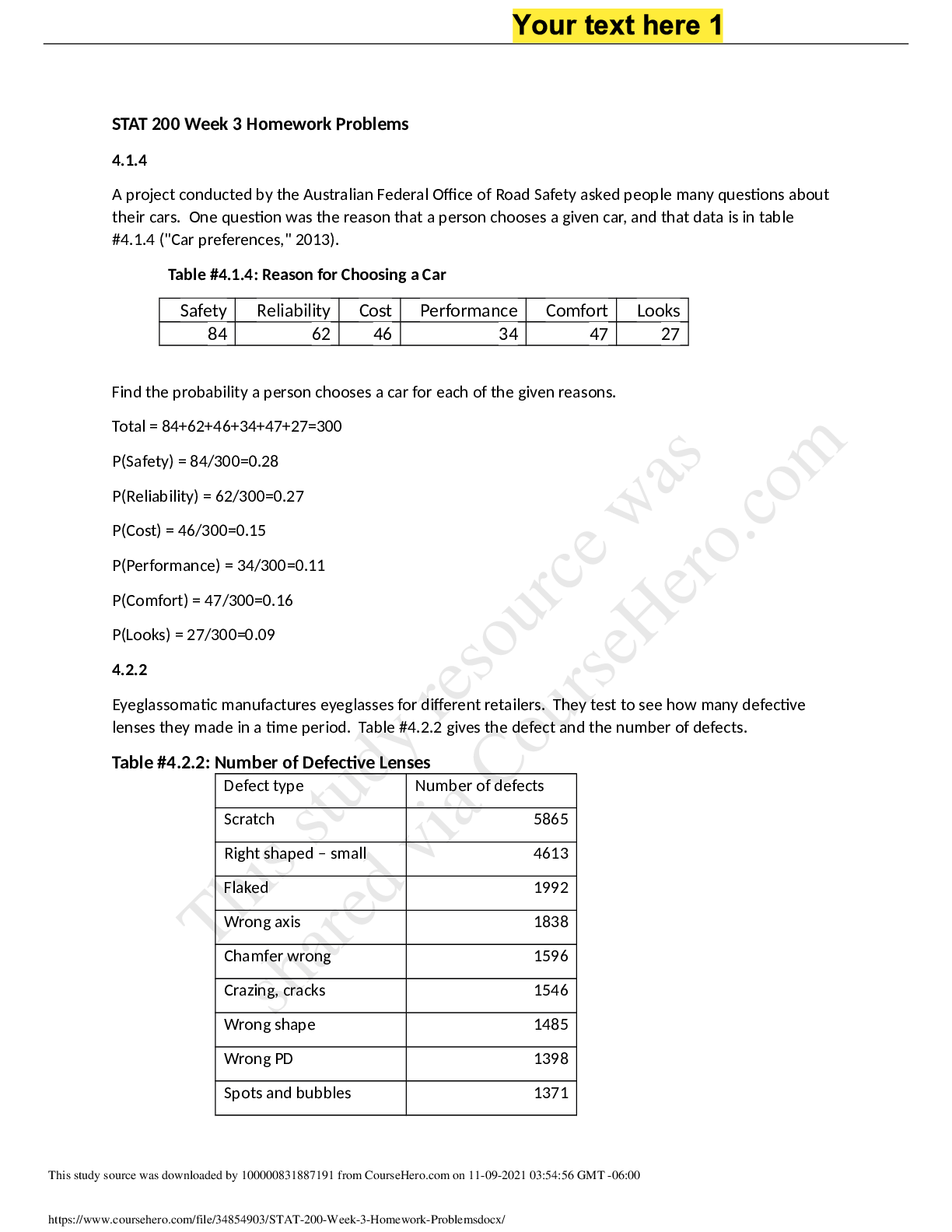

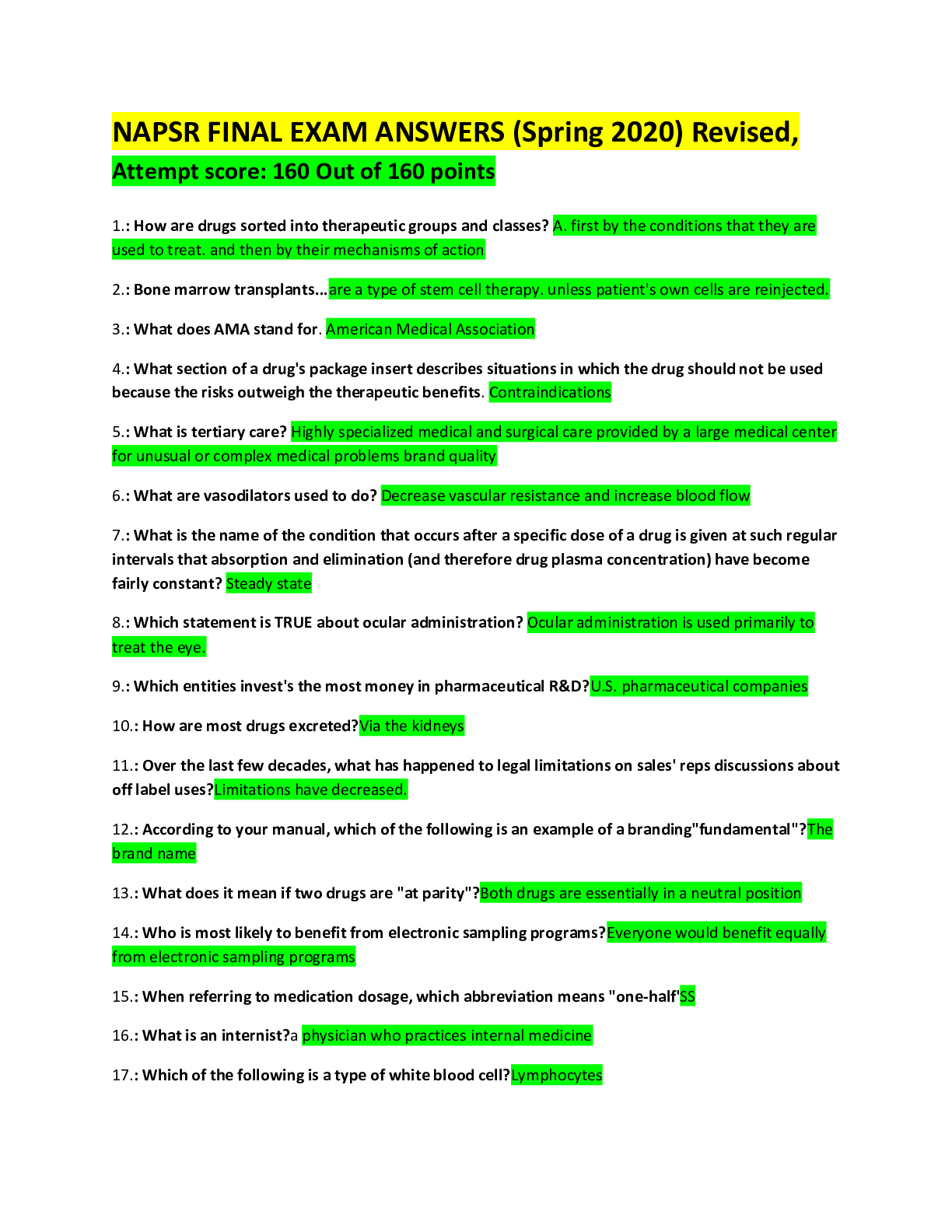

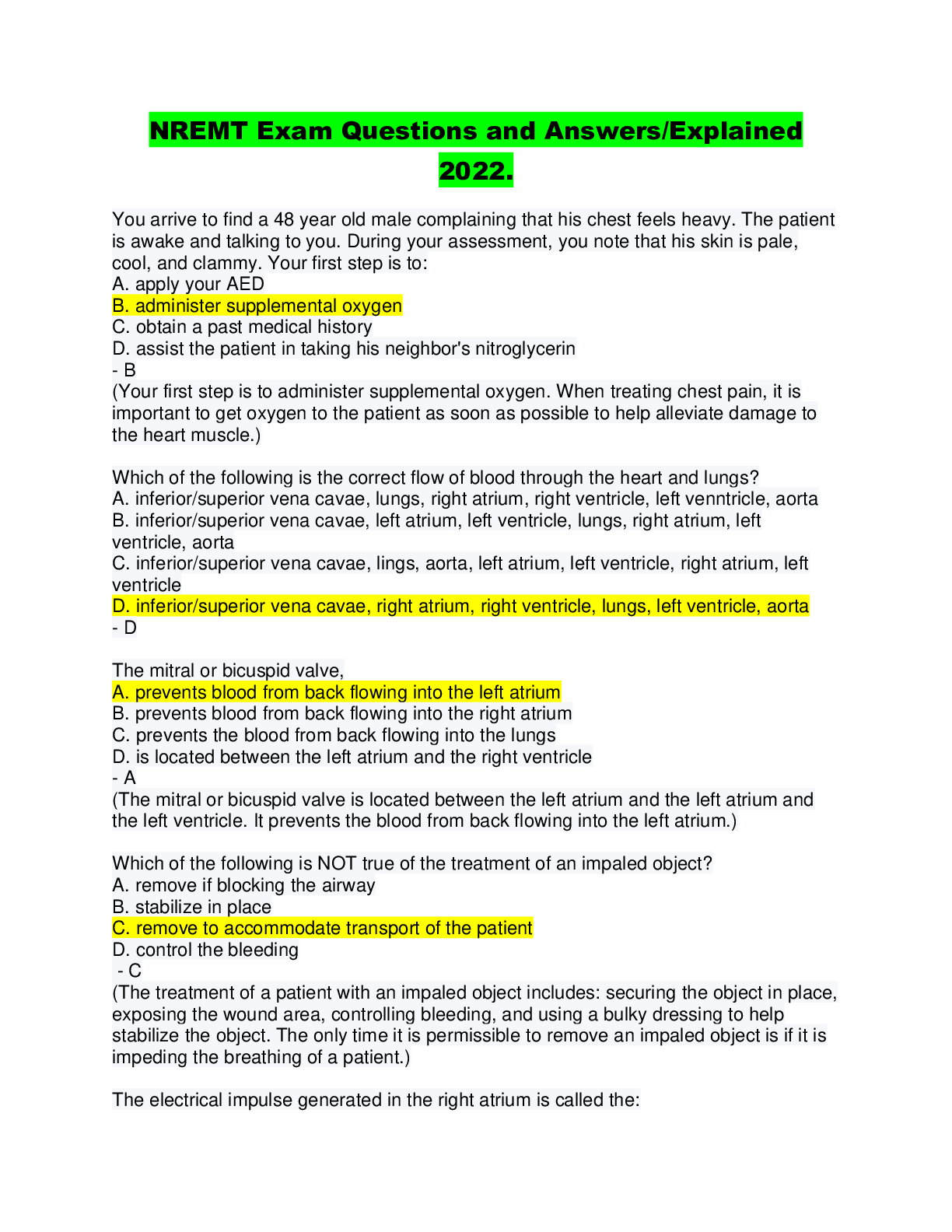
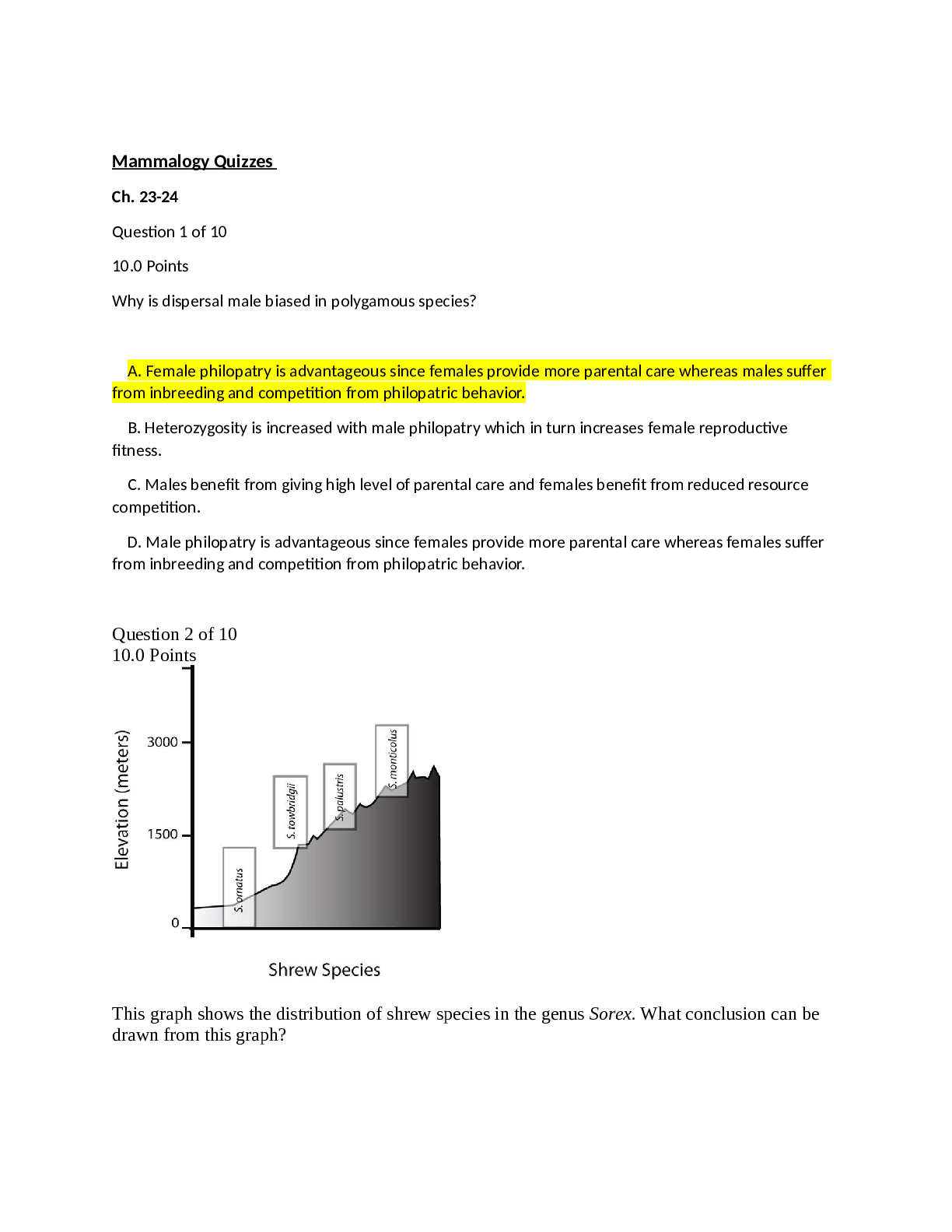
.png)

.png)


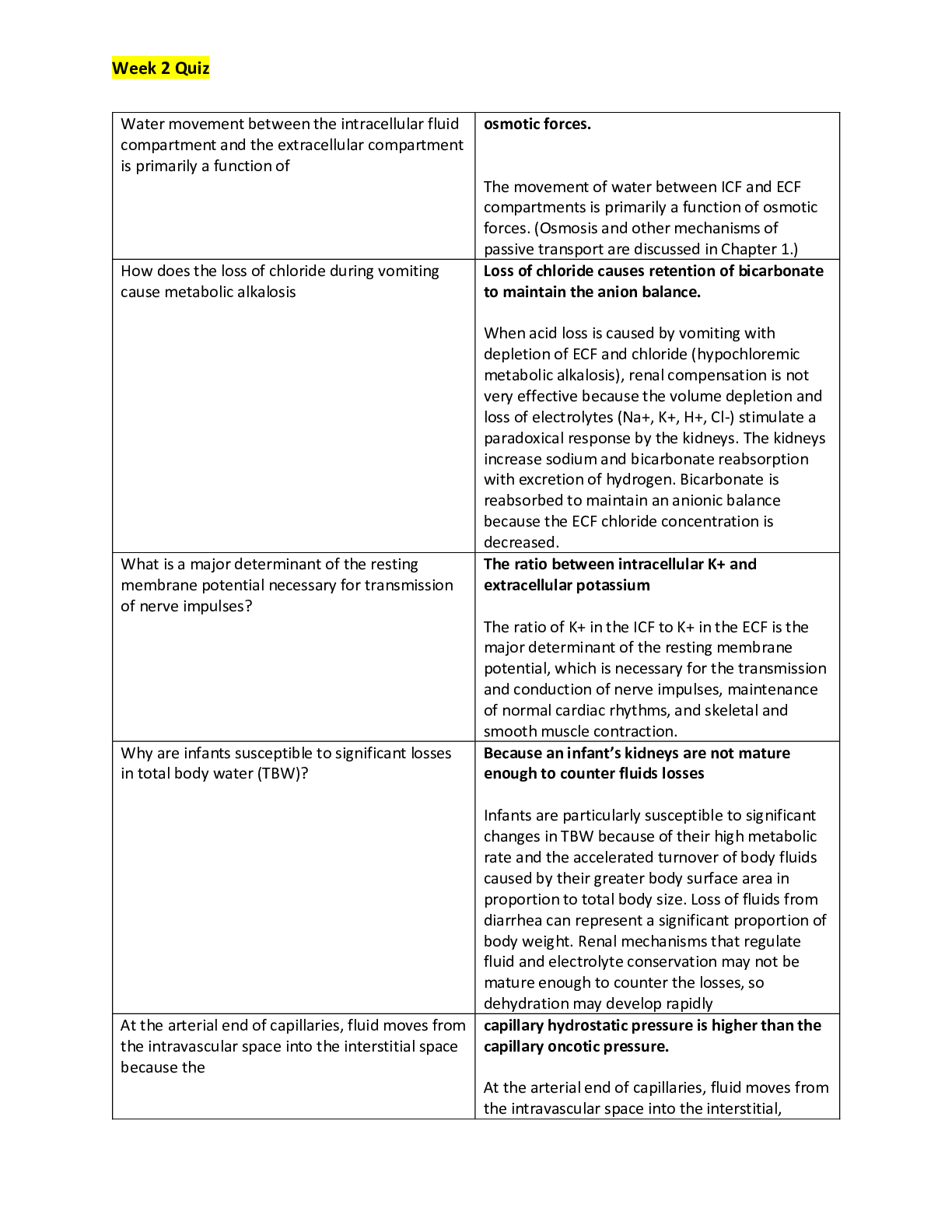
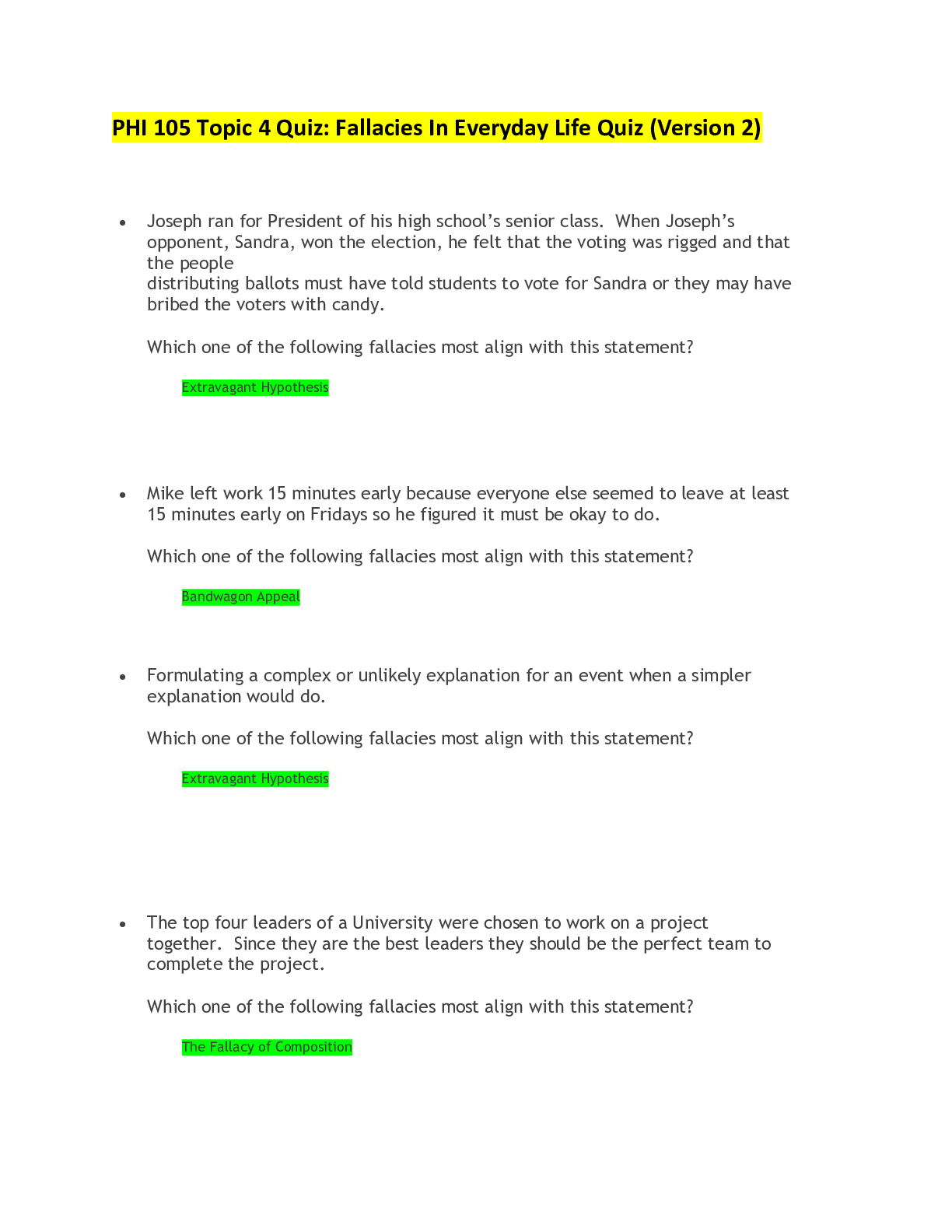



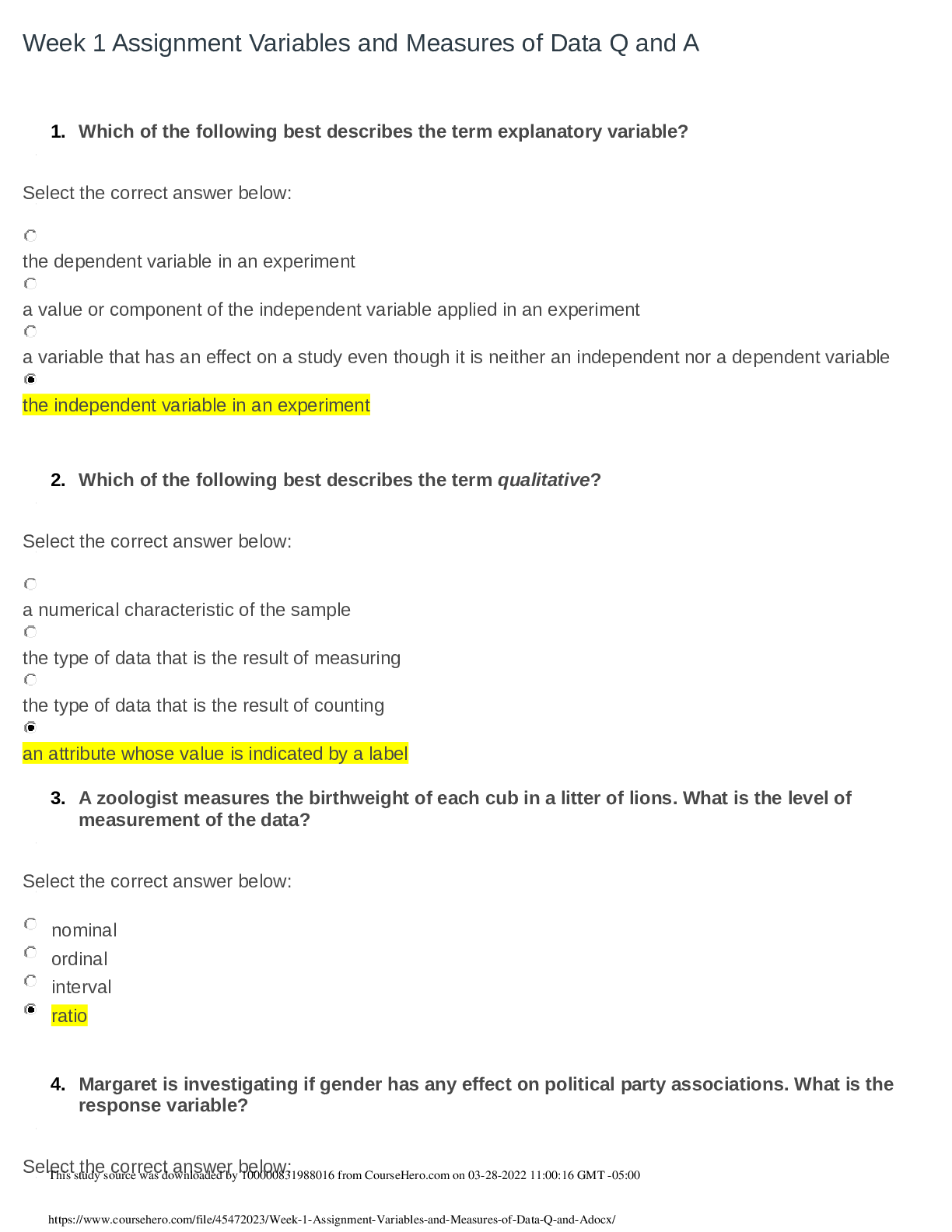



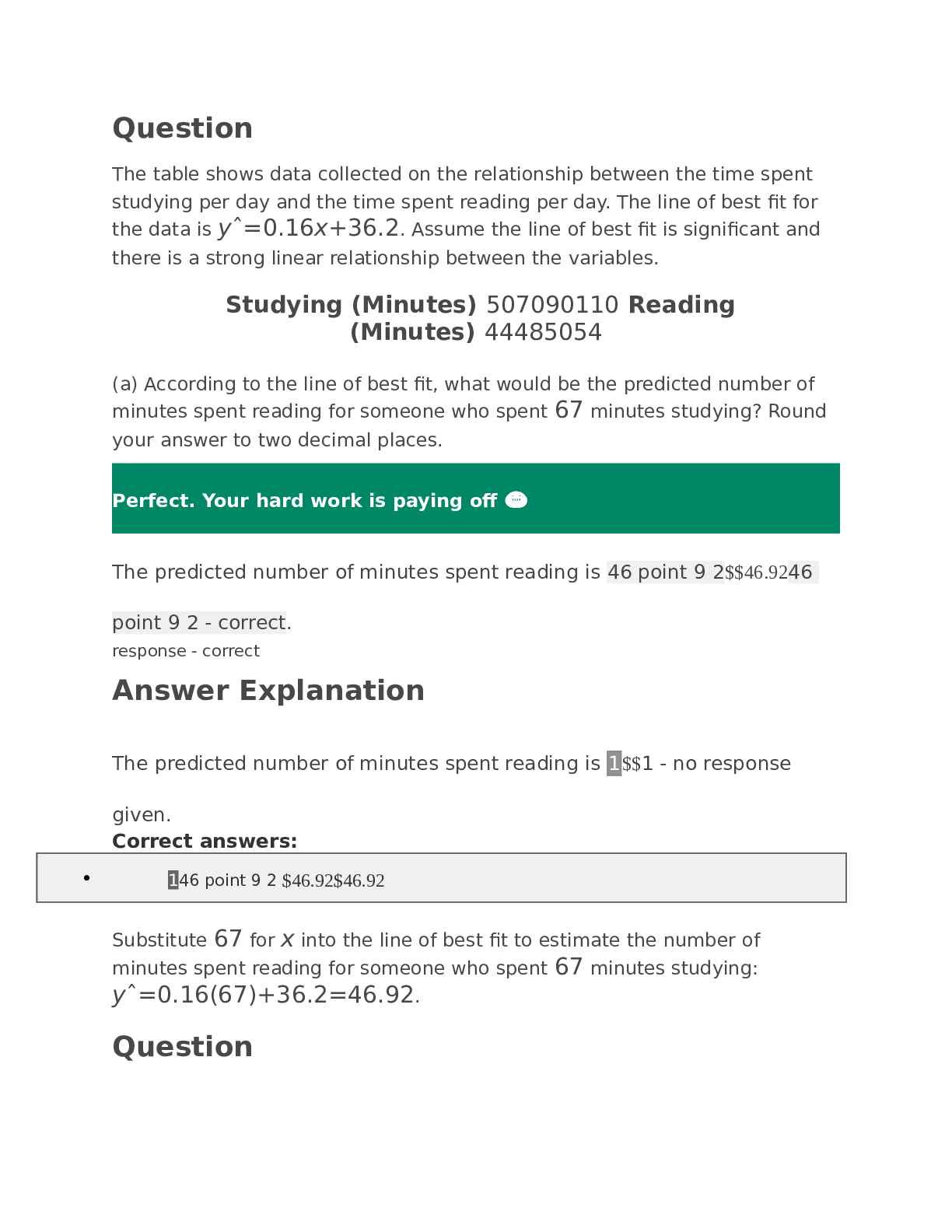
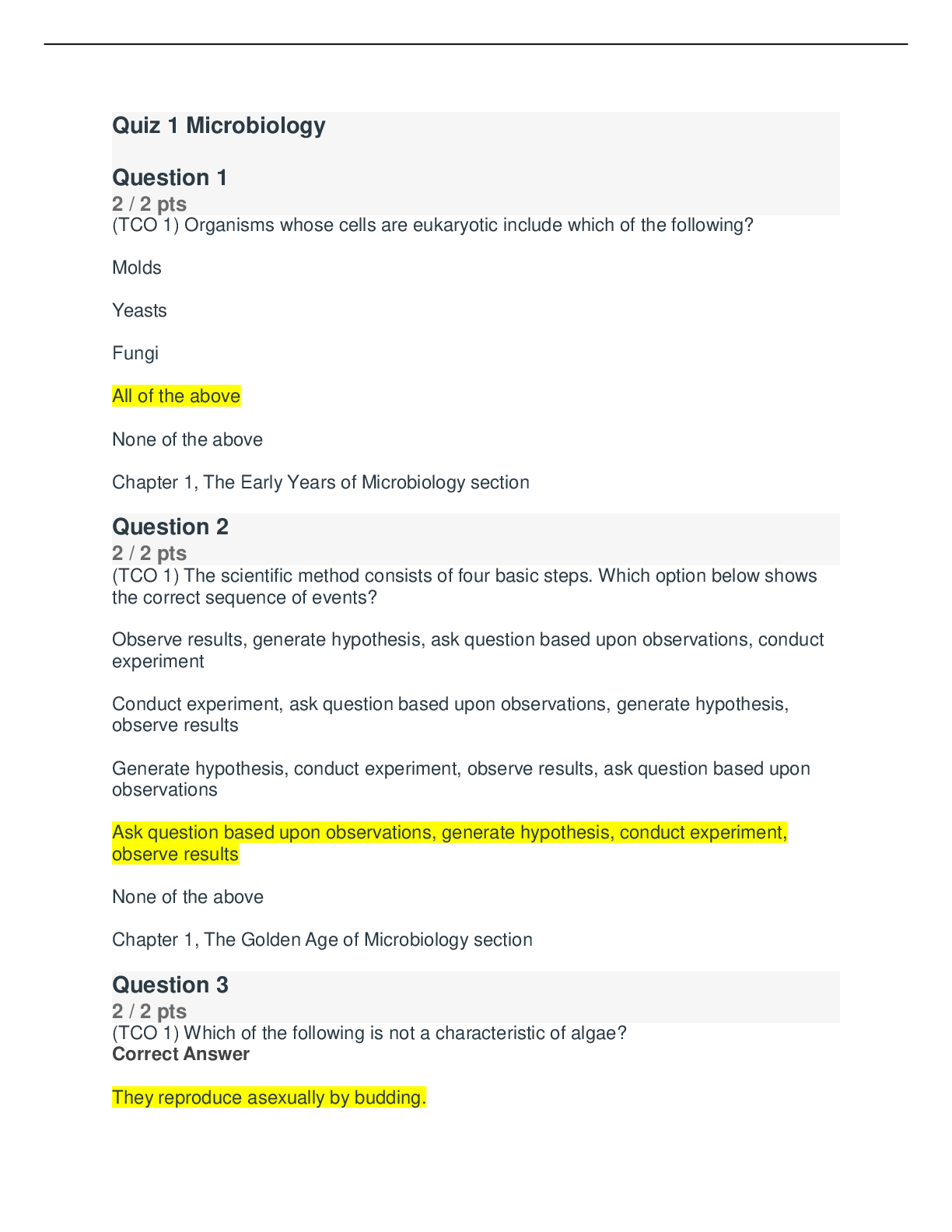

.png)

